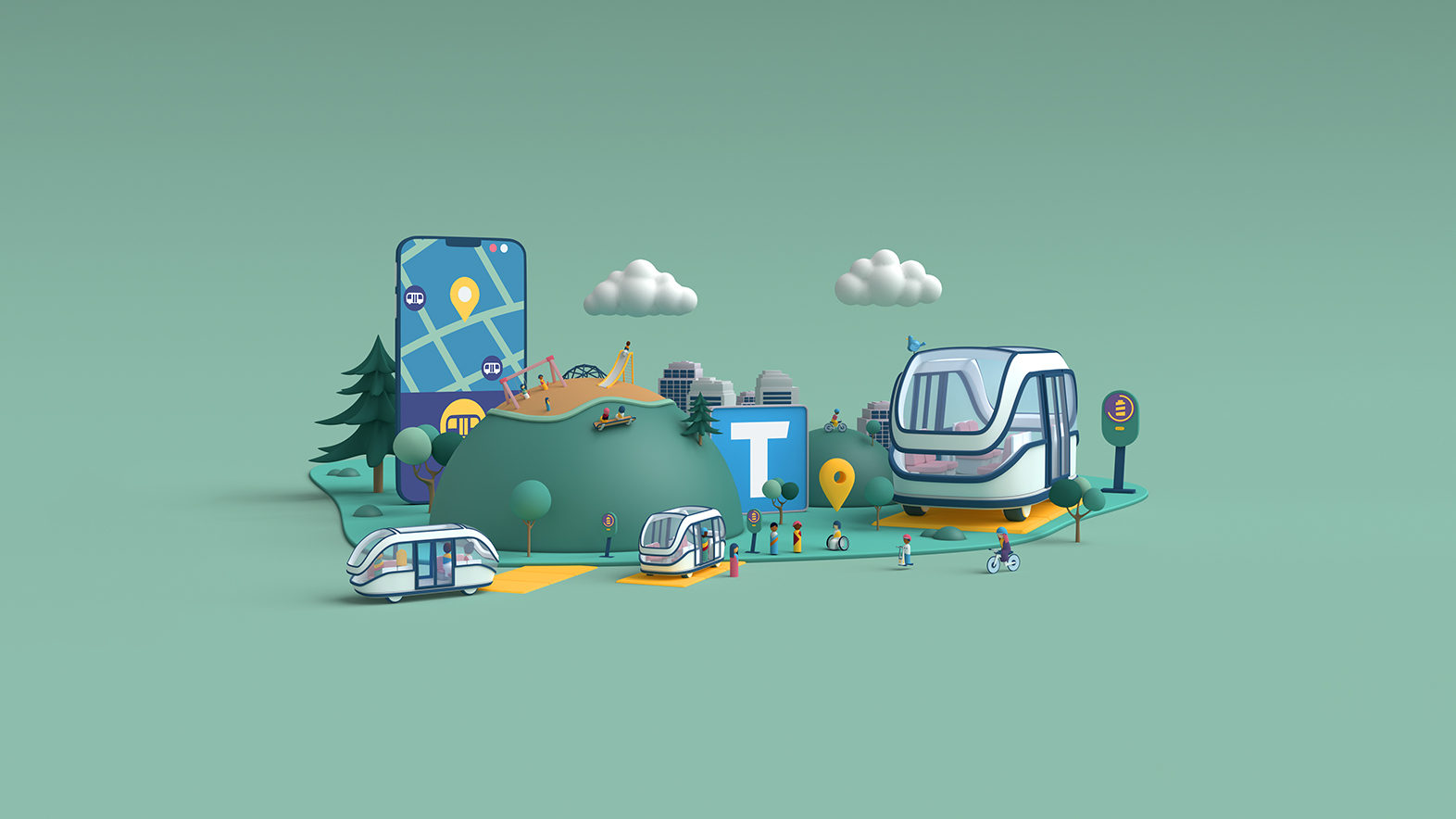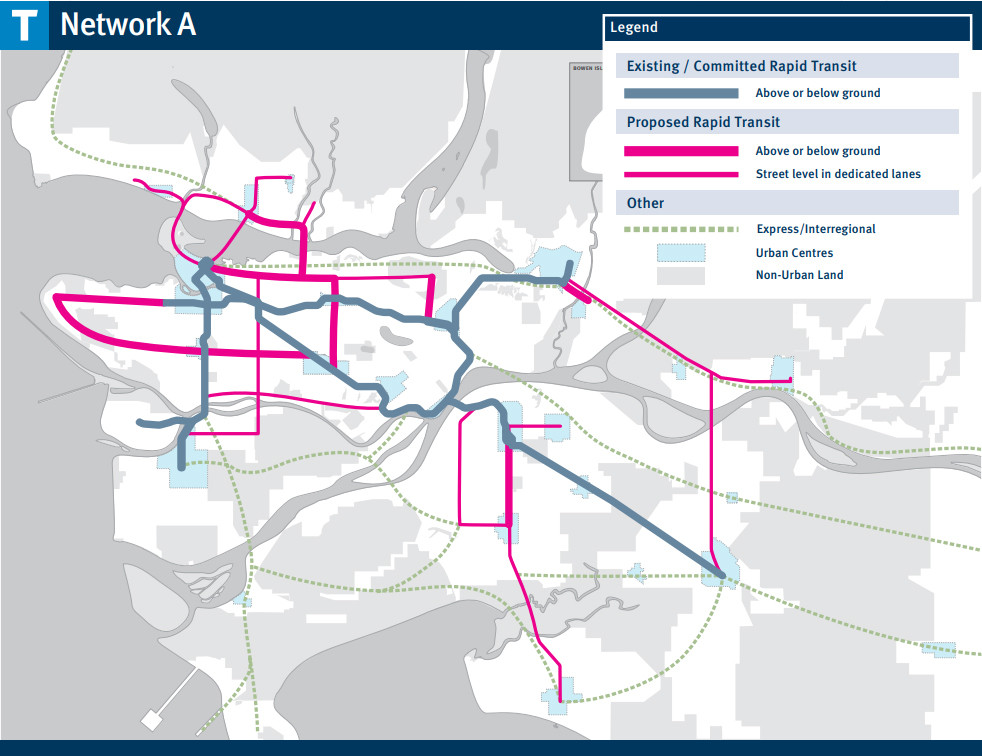Transport 2050: some questions and answers
Transport 2050: some questions and answers

You asked, we answered.
We hosted an Ask Me Anything (AMA) on Reddit with Andrew McCurran, TransLink’s director of strategic planning and development, to answer all your questions about Transport 2050, the region’s next 30-year transportation strategy.
In this phase of public engagement, until May 14, we want to know what you think about people-first streets, the next generation of rapid transit and how automated vehicles fit into the transportation system. Take the survey at transport2050.ca and have your say on the future of transportation in Metro Vancouver.
Naturally, Andrew fielded a lot of questions on the three transformative actions during the AMA!
Three Transformative Actions
People-first streets is a transformative action we’re proposing as a way to encourage more walking, biking and rolling on our roadways instead of designating space just for vehicles. One of the questions we received about people-first streets was based on concern that these types of streets would only be in place in dense urban centres.
“People-first streets aren’t just about dense urban centres. There are neighbourhood streets throughout the region where we see low vehicular traffic. By reducing the speed, they can be safer places for children to play and neighbours to gather, and uses other than infrequent, high speed traffic.” – Andrew McCurran
We’re also gathering feedback on what the next generation of rapid transit in the region could like will look like as a part of Transport 2050.
We’re proposing two main network options to consider as we build out our network over the next 30 years. Network A would consist of 200 kilometres of additional rapid transit, while Network B would consist of 400 kilometres more. The key difference between the two options would be Network A having more above- and below-street level infrastructure, while Network B would have more street level infrastructure in dedicated lanes.
One question we received was how definitive these options would be moving into the future.
“Network A and B are really concepts that illustrate two different approaches to expanding the rapid transit network. Both are intended to be iterative. They’re not the ultimate end state. The region will continue to grow and we’ll need to refine our approach over time. But what we’re asking for feedback in Transport 2050 is about which approach generally speaking we should take: focusing on fewer corridors but building to higher capacity, or building more corridors reaching more of the region with the trade-off of repurposing road space for dedicated transit lanes.” – Andrew McCurran
Another popular question was how we’re planning to expand capacity on the SkyTrain network. The answer? Through Transport 2050! That’s why we need your input on the conceptual networks.
“The Canada Line is built to allow expansion. We can add more frequent trains to increase capacity from about 6,000/hr today to 9,000. There is further potential to increase capacity by another 25% with slightly longer trains with some (planned for) modifications of the stations. We think that after those expansions are made – Canada Line will reach its ultimate capacity in the latter period of this 30-year strategy. Which is why we’re going to be planning for the longer-term, beyond hitting max capacity on existing lines. Expo Line will also reach its ultimate capacity by 2050, so any network approach we take in Transport 2050 will need to include relief solutions for both of the Expo and Canada Lines. Those solutions could include regional rail, parallel rapid transit lines on different corridors, or additional capacity on the same corridors.” – Andrew McCurran
The integration of automated vehicles into our transportation network is certainly the most futuristic thing we’re looking at for Transport 2050. It might have been something that would’ve been left to sci-fi only a few years ago, but as technology’s progressed so has the possibility of integrating them into our transportation system.
One person asked what these automated vehicles would look like compared to public transit once they’re integrated into the system.
“To the user on the street, it might not look that different. The distinction between shared RoboTaxi and a small transit vehicle will be pretty blurry. The main distinction is likely to be a question of ownership and payment, like who operates it and its funding and payment model.” – Andrew McCurran
TransLink’s Future
We also received lots of questions about the inner-workings of TransLink. This line of questions got away from the Transport 2050 topic, but given Reddit users were interested in it we thought you would be as well.
The most upvoted comment in the thread centred around whether we’ve considered reducing fares as a strategy to increase ridership, here’s Andrew’s answer:
“While reducing fares would increase ridership, it would come at a big cost. The key tradeoff is: spending the money to reduce fares versus spending the money to improving the transit system. While price is a barrier for people who are lower income, but for most people, it is the quality of service. I think this should be addressed with targeted discounts.” – Andrew McCurran.
This really only scratches the surface of everything that was covered. Andrew also answered questions on the possibility of a SkyTrain to the moon to a new way to cross the Fraser River involving rubber.
You can check out the full AMA here.







